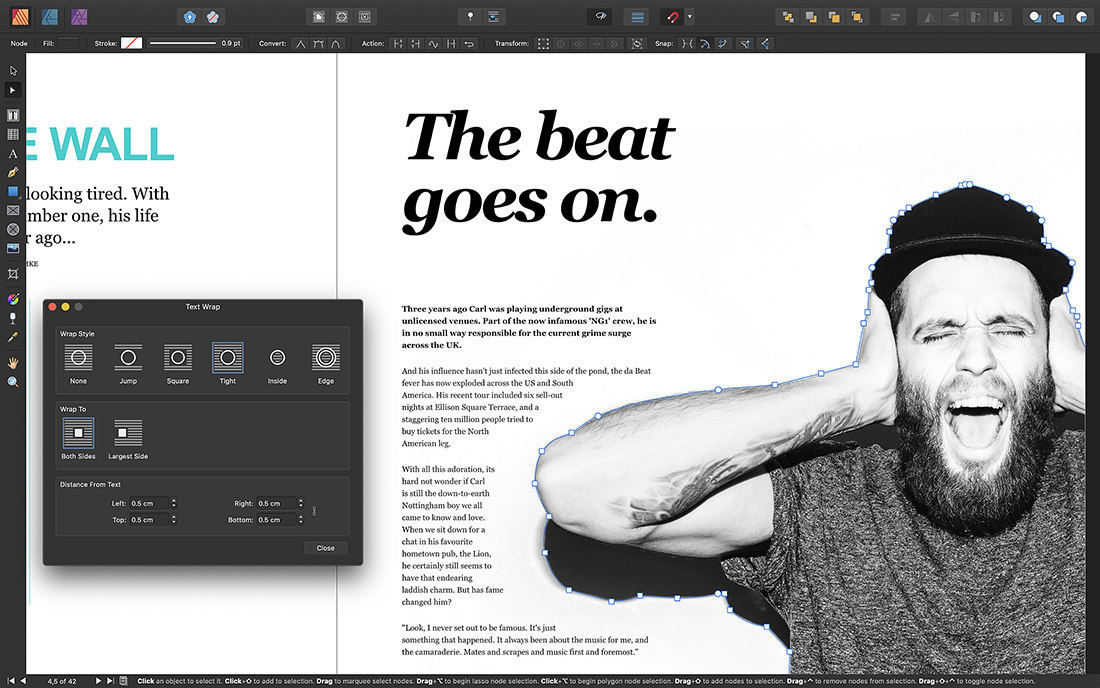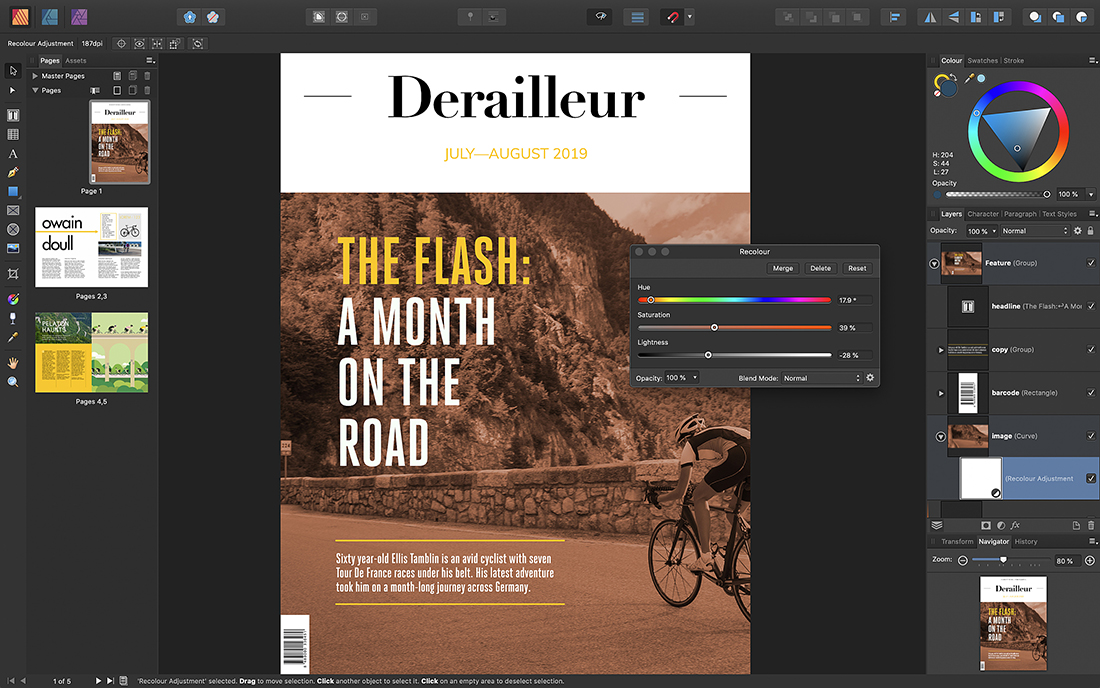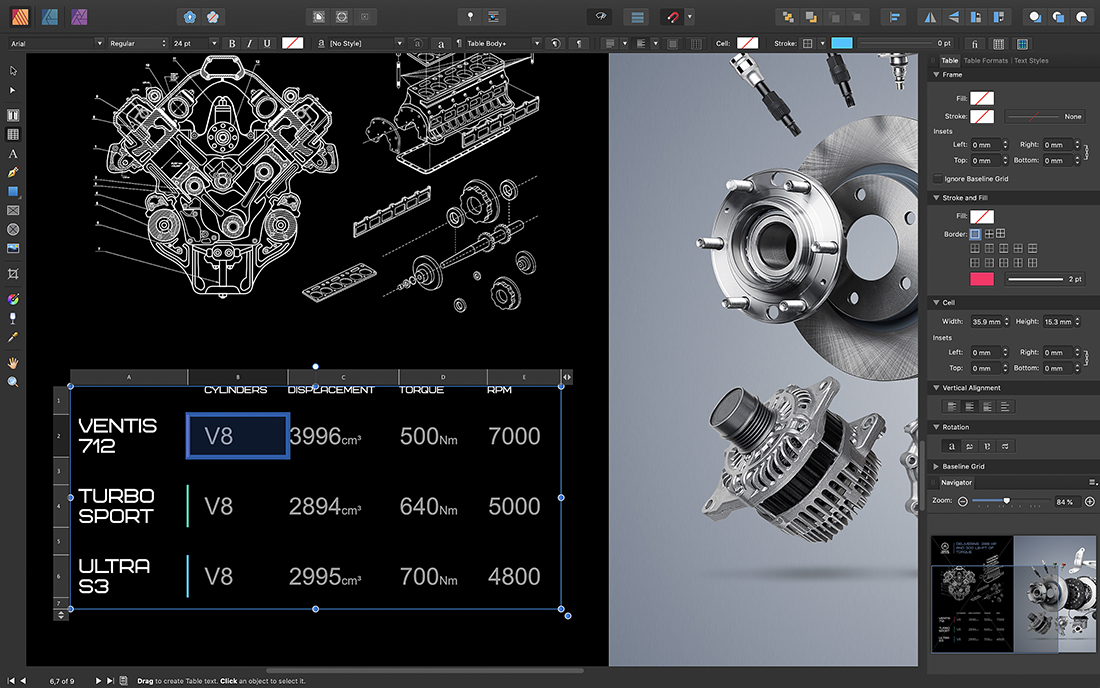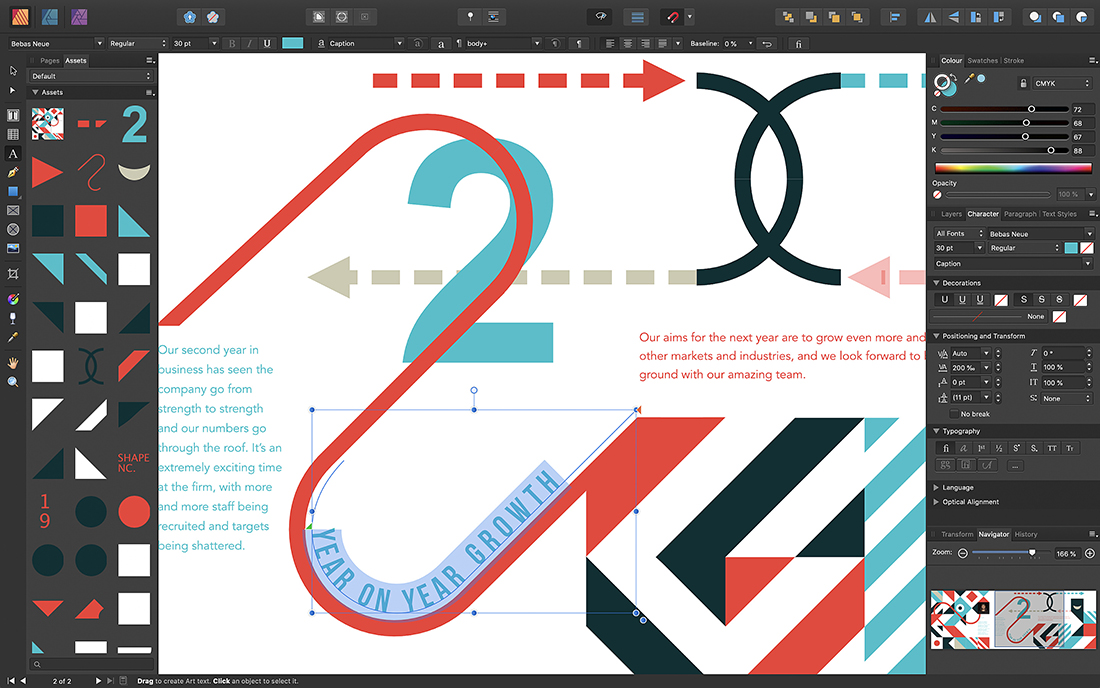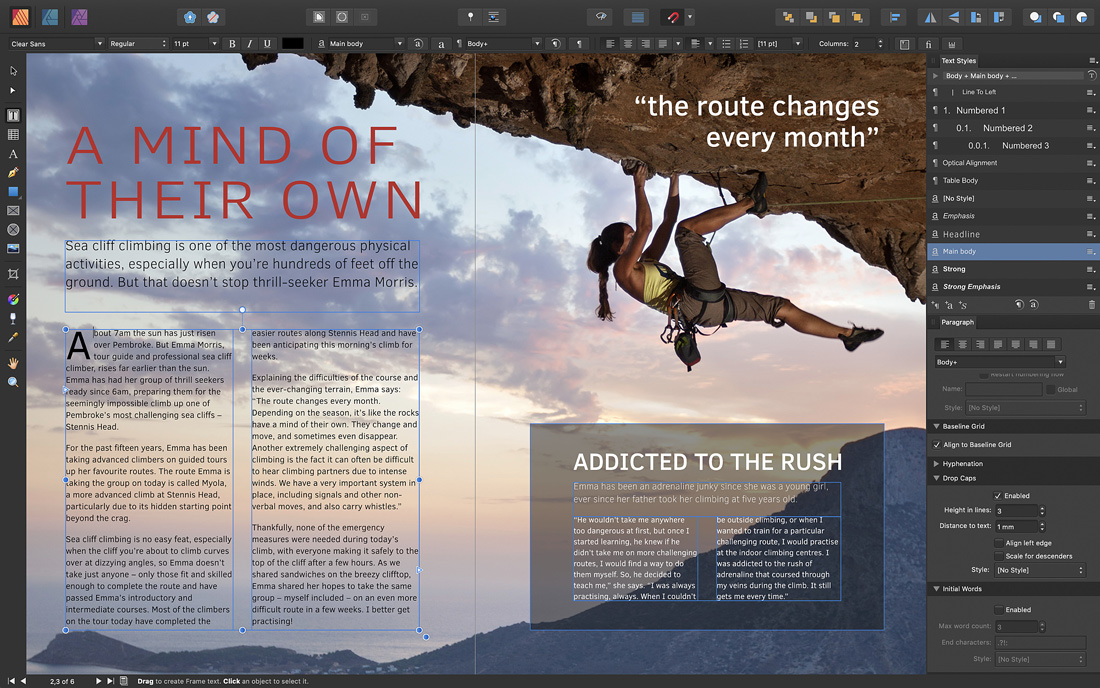
18 Nov Affinity Publisher: An Alternative to Creative Cloud
Over the past two months, we’ve been reporting on Serif’s Affinity and its suite of creative programs: Designer, Photo, and Publisher. So far we’ve covered Affinity Designer, their Adobe Illustrator equivalent, and Affinity Photo, their Photoshop competitor. This month, we’re finishing our three-part series with a review of Affinity Publisher, their desktop publishing program.
Affinity Publisher is Serif’s newest offering; the software was only released in June of 2019. However, the beta versions of Publisher generated a lot of buzz when Affinity made it publicly available and set up a forum to solicit feedback from users. Not all the beta reviews were positive, but many were intrigued by the idea of a powerful desktop publishing program not bound to a subscription plan.
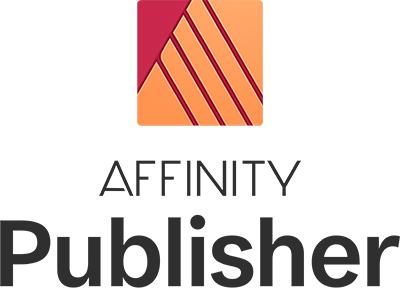
Affinity also seems to have paid attention to the criticism. By the time Publisher launched, the bugs highlighted by the beta testers had been addressed. In fact, the software overall has received glowing reviews, and is packed with tools, many of which are unique to the program. Publisher appears to be a serious contender to InDesign.
StudioLink: Seamless Workflow with Design and Photo
The one feature which reviewer after reviewer after reviewer gushes about is StudioLink. Have you ever worked in an InDesign document and discovered you need to correct something in your placed Photoshop or Illustrator graphic? InDesign permits you to edit the original graphic, but doing so entails clicking “edit link” in the links menu to prompt the original software to open (which, depending on how tapped out your memory is, can be an issue itself), waiting while that software loads, then making the edits, saving, and updating the link, clicking back to the InDesign document, updating the link, reviewing your work, and clicking back to the graphic if you need to keep adjusting it. While the inconvenience is relatively minor, it interrupts the design process and takes you out of your creative mindset.
In answer to this, Affinity has implemented StudioLink. If you already have Affinity Design and/or Photo, you can seamlessly edit placed graphics from those programs within your Publisher document. Simply click the Photo or Design icon located on the top left of the workspace screen. That prompts Publisher to switch to either the Photo or Design “Persona”: the tools and interface for that program will be displayed, permitting you to do high-level editing to the graphic. You haven’t left your Publisher document, though, so as you edit your graphic, you’ll see how the graphic looks within your Publisher document. Best of all, the edits are instantaneous; there’s no waiting for programs to open. (A StudioLink demonstration can be viewed at 16 minutes 20 seconds in the recorded 2019 Affinity Live presentation.)
The result is a seamless integration of the three programs. StudioLink permits drag-and-drop editing – simply drop Photo or Design files directly into a Publisher document. Not only can users make edits within the layout (permitting, for example, easy color matching), those edits are non-destructive. That means whatever edits are applied in Publisher are not applied to the original image, which is preserved. This StudioLink magic is possible because all three programs – Publisher, Design, and Photo – use the same file format. That also means each program can open and edit (to varying degrees) files created in any of the other programs.
Unique and Improved Tools and Features
In addition to a full complement of tools and features familiar to InDesign users, Publisher has some unique offerings. For example, Publisher includes a History panel, which stores up to 8,000 steps. Users can jump back and forth in a document’s history, and can even save the history with the document. That means the steps taken to create the document are preserved even after the document is closed and reopened. Another example of a unique tool is the Publisher Assets panel. Assets such as images can be organized into multiple image groups (for example, for different clients), and individual assets dragged from the panel directly onto the page.
Publisher has also improved a number of familiar InDesign features. For example, the Publisher Layers panel permits the creation of different layers for different pages in a document. Those layers are much easier to navigate than the InDesign equivalent; in Publisher, the Layers panel includes a thumbnail of the content in each layer. Another example of a superior feature is the Tables feature. InDesign users complain that its table editor is clumsy and unintuitive when making simple edits, such as changing the stroke on individual cells. By contrast, Publisher gets high marks for its intuitive table tool which makes such table customization a snap.
Consensus on the Cons
Every review of Publisher agrees that the major downside to the program is that InDesign files – both INDD and IDML – can’t be opened in Publisher. That’s a huge drawback for designers who have spent the past decade working in InDesign, and need to access and edit their old files. However, Affinity has indicated that they’re working on permitting IDML files to be opened by Publisher. (Publisher users have reported on Affinity’s user forums that PDFs exported from InDesign can be opened and edited by Publish.)
Other than that, there have been very few complaints about Publisher. Digital Arts points out that Publisher relies on PDF for web publishing, and, for print publications, Publisher is missing some specialized preflight options that exist in InDesign. Creative Pro points out that while Publisher can create tables of content and indices, it can’t yet create footnotes and endnotes, meaning the program would not be a great solution for book publishers.
High Trade Publication Ratings
Unlike Photo and Design, there aren’t a lot of user ratings of Publisher – probably because it is so new. However, trade publication reviews across the board are strongly in favor of the program: for example, four out of five stars on TechRadar and Digital Arts, 4.5 out of five on Lemonade, and Windows Central.
Publisher is available as a one-time purchase for $49.99, and a 10-day free trial can be downloaded. The program runs on both Windows and Mac OS; and iOS version is supposed to be released sometime in 2020.

